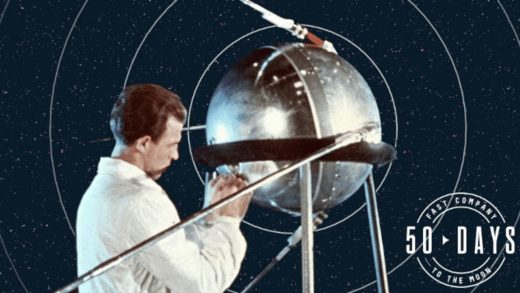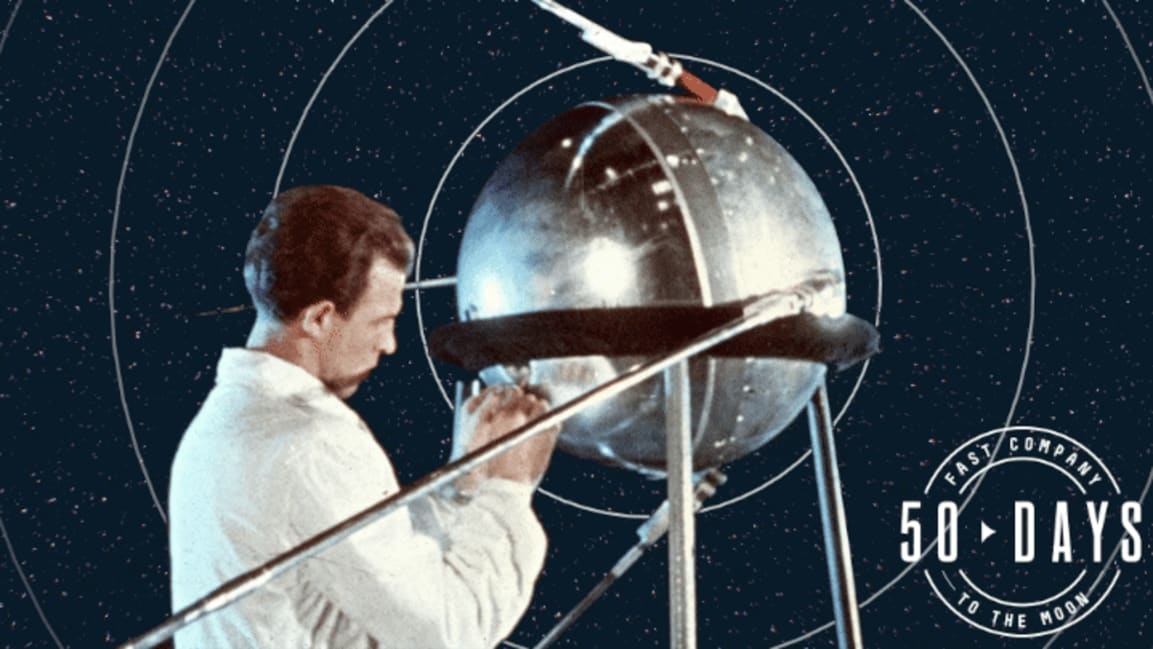The birth of the electronic beep, the most ubiquitous sound design in the world
This is the eighth in an exclusive series of 50 articles, one published each day until July 20, exploring the 50th anniversary of the first-ever Moon landing. You can check out 50 Days to the Moon here every day.
The electronic beep is everywhere. When you don’t fasten your seatbelt, your car beeps. When your microwave has finished reheating your leftover Chinese takeout, it beeps. The dishwasher beeps; the smoke detector beeps; when the coffee maker turns itself off automatically, it beeps. If you misplace your iPhone, you can make it beep, by remote control.
Decades in advance of Siri and Alexa, the beep became the universal way for our inanimate objects to get our attention.
But the electronic beep was born before the digital age of which it is the hallmark. The first time most of the world heard the beep was from space–from the very first human-made object launched into space, Sputnik 1.
Because that’s what Sputnik did: It beeped, and it orbited the Earth.
And the beep was front and center.
The CBS News special devoted to the launch and impact of Sputnik opened with 18 seconds of the recorded beep. “Until two days ago,” said anchor Douglas Edwards, “that sound had never been heard on this Earth. Suddenly, it has become as much a part of 20th century life as the whirr of your vacuum cleaner.”
The sensation that Sputnik caused across the country, and around the world, is hard to overstate. Newspapers, including the Washington Post and the Chicago Tribune, ran Sputnik timetables each day: schedules showing at what time Sputnik was passing over various cities around the world. The New York Times, among its saturation coverage, ran a story explaining that ordinary household AM radios didn’t have the range to pick up Sputnik’s beeps.
Sputnik didn’t do any science: It simply represented Russia’s technical and engineering prowess. By contrast, the first U.S. satellite launched successfully, Explorer 1, came four months later, and in its compact 18-pound package carried an array of scientific instruments, and made the first major discovery of the space age–the existence of the Van Allen radiation belt encircling the Earth.
Sputnik’s beep, though, became representative of both Russia’s achievement, and its ominous overtones. Life magazine wasn’t satisfied with calling Sputnik’s sound a “beep.” Its first story on Sputnik opened: “An eerie, intermittent croak–it sounded like a cricket with a cold–was picked up by radio receivers around the world last week . . . . ” In a story on the geopolitical impact of Sputnik, headlined “The Beeper’s Message,” Time magazine said, “What was immediate and sure was the beeper’s psychological impact . . . . Its message, said the London Economist last week, was a simple one: ‘We Russians, a backward people ourselves less than a lifetime ago, can now do even more spectacular things than the rich and pompous West–thanks to Communism.’ ”
It was, in fact, an eloquent “beep,” as the Economist translated it.
For virtually everyone in the United States, and in the rest of the world, Sputnik’s distinctive chirping was the first time they’d ever heard an electronic beep. The word “beep” itself was first used to describe the sound of a car horn, according to the Oxford English Dictionary, in 1929. So as a word, it wasn’t even 30 years old when Sputnik started beeping. Arthur C. Clarke, the science fiction author who went on to write 2001: A Space Odyssey, is credited with the first use of “beep” to describe the electronic tone from a computer, in his first novel, The Sands of Mars, in 1951.
Sputnik went silent 21 days after launch when, the Russians reported, its batteries ran out of power.
The beep itself has become so ubiquitous that in some settings–especially hospitals–there are studies showing that “alarm fatigue” reduces the quality of medical care that nurses, doctors, and technicians can deliver. One 2014 analysis of computer warning beeps from medical devices at Johns Hopkins University Hospital showed that there were 350 alarms per patient bed per day, so many it was all but impossible for personnel to distinguish the important beeps from the trivial.
The evening of Sputnik’s launch on October 5, 1957, an announcer for NBC News got it much more correct than he could have imagined. Introducing a recording of Sputnik’s beep, he said, “Listen now for the sound which forever more separates the old from the new.”
Charles Fishman, who has written for Fast Company since its inception, has spent the last four years researching and writing One Giant Leap, a book about how it took 400,000 people, 20,000 companies, and one federal government to get 27 people to the Moon. (You can pre-order it here.)
For each of the next 50 days, we’ll be posting a new story from Fishman–one you’ve likely never heard before–about the first effort to get to the Moon that illuminates both the historical effort and the current ones. New posts will appear here daily as well as be distributed via Fast Company’s social media. (Follow along at #50DaysToTheMoon).
Fast Company , Read Full Story
(20)



